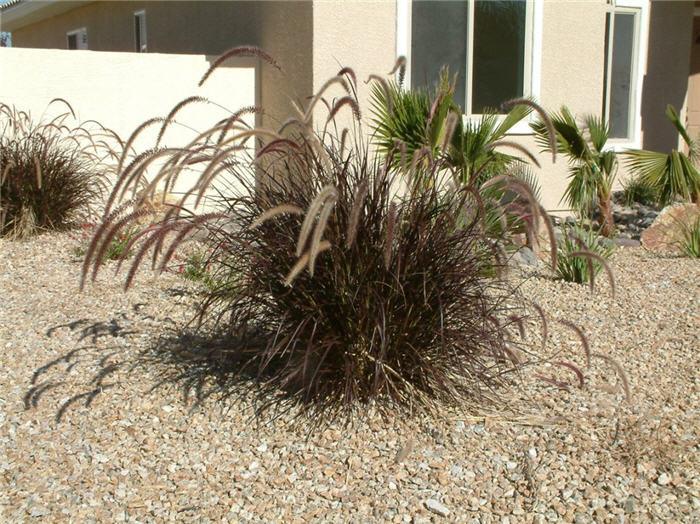| Botanical Name: Pennisetum 'Rubrum' | |
| Common Name: Purple Fountain Grass |

-
Anatomy
-
Culture
-
Design
Plant Type
Annual, Grass
Height Range
1-3'
Flower Color
Purple
Flower Season
Summer, Fall
Leaf Color
Bronze, Purple, Red
Bark Color
n/a
Fruit Color
n/a
Fruit Season
n/a
Sun
Full
Water
Low, Medium
Growth Rate
Fast
Soil Type
Sandy, Clay, Loam, Rocky, Unparticular
Soil Condition
Average, Rich, Poor, Well-drained, Dry
Soil pH
Neutral, Basic
Adverse Factors
n/a
Design Styles
English Cottage, Formal, Japanese, Mediterranean, Ranch, Spanish, Tropical
Accenting Features
Showy Flowers, Specimen, Unusual Foliage
Seasonal Interest
Summer, Fall
Location Uses
Entry, Perennial Border, Shrub Border, Patio, Raised Planter, Walkways
Special Uses
Container, Cut Flowers, Small Spaces
Attracts Wildlife
n/a
Information by: Stephanie Duer
Photographer: Linda Engstrom
Photographer: Linda Engstrom
-
Description
-
Notes
This is one annual that is very worth the effort of re-planting each spring. Purple fountain grass is a strikingly purply-red grass that grows in hot, miserable sites, even against buildings, or in pots surrounded by concrete. Its form is generally upward and arching, with even the plumes softly bending. The plumes emerge early summer and continue through the summer months and are tinged purple to buff. Color holds until a hard frost. Grows about 2 to 4 feet tall and wide.
Best color occurs in full sun, though it will tolerate a bit of shade, the blades will "green out" if it doesn't get enough light. Plant in any soil, as long as it is well drained. Not xeric, or particularly drought tolerant, but it certainly uses less water than annuals that deliver less show. Once it's planted, leave it be except to water; don't shape it or shear it, it's best left alone. The plumes are lovely in vases, but snip them off as close to the crown of the plant as you can get.